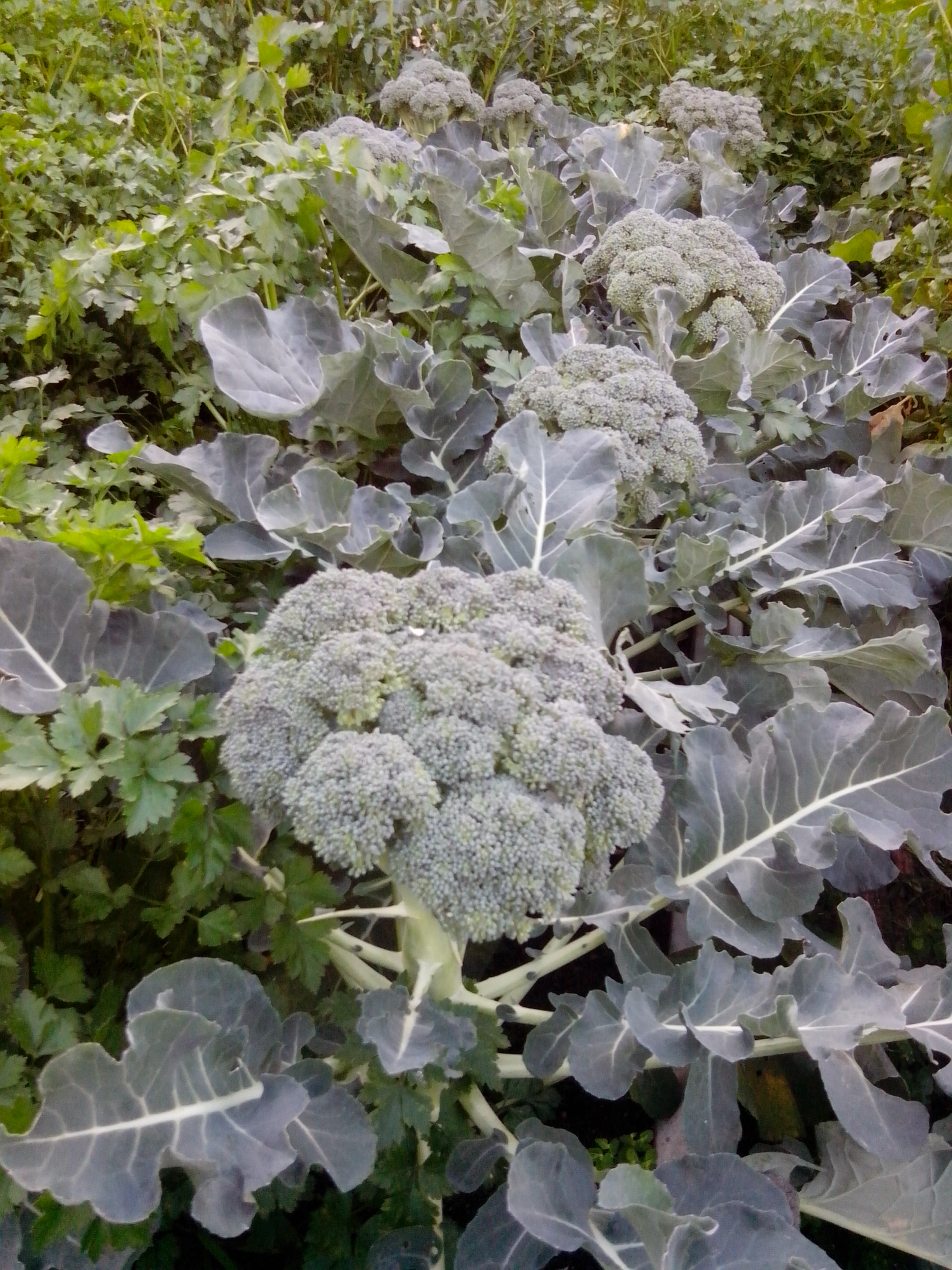
Broccoli
Brassica oleracea var. italica
Basic Information
🌿 Family: Brassicaceae🗺️ Zone: 2-11
Other Names:
- Calabrese
🌡️ Ideal Temperature : 65°F°F – 75°F°F
🔥 Heat Tolerance: Up to 95°F°F
❄️ Cold Tolerance: Down to 26°F°F
🌱 Type: Annual
Layers
- Herbaceous
Functions
- Edible
- Medicinal
- Pollinator
- Ground Cover
Pests
No pests associated with this plant.
Description
Broccoli is a cool-season annual vegetable known for its large, green flowering head and thick stalk. The plant typically grows to a height of 60–90 cm (24–35 inches) and features dense clusters of unopened flower buds arranged in a tree-like structure. Broccoli thrives in fertile, well-drained soils with a pH between 6.0 and 7.0. It is a heavy feeder, requiring rich soil and consistent moisture for optimal growth.
🌞💧 Sun and Water Requirements:
Broccoli requires full sun, needing at least 6 hours of direct sunlight daily. Consistent moisture is essential; however, overwatering should be avoided to prevent root diseases. Mulching helps retain soil moisture and maintain cooler soil temperatures.
✂️🫘 Methods to Propagate:
Broccoli is propagated from seeds. For spring planting, sow seeds indoors 6–8 weeks before the last expected frost date. Transplant seedlings outdoors 2–3 weeks before the last frost, spacing them 45–60 cm (18–24 inches) apart. For a fall harvest, direct sow seeds outdoors in mid to late summer, ensuring they have sufficient time to mature before the first frost.
🧑🌾👩🌾 When to Harvest:
Harvest broccoli when the central head is fully developed but before the flower buds open, typically 50–90 days after transplanting. Cut the main stem about 15 cm (6 inches) below the head. After the central head is harvested, smaller side shoots will develop, providing additional yield over several weeks.
Purpose
- Edible: Broccoli heads and stems are rich in vitamins C and K, fiber, and antioxidants. They can be consumed raw or cooked in various dishes, including steaming, roasting, and stir-frying.
- Medicinal: Broccoli contains compounds like sulforaphane, which have been studied for their potential anti-cancer and anti-inflammatory properties.
- Pollinator: While primarily grown for its edible parts, if allowed to flower, broccoli produces small yellow flowers that attract bees and other pollinators.
- Ground Cover: Broccoli's broad leaves can provide ground cover, helping to suppress weeds and retain soil moisture.